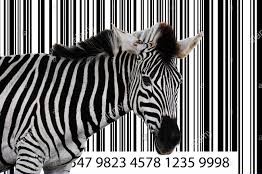How To Use Barcodes To Effectively Manage Inventory
In today’s digital world, barcodes have become an essential tool for businesses of all sizes. Barcodes allow businesses to quickly and accurately track inventory while reducing costs associated with manual data entry. Learning how to use barcodes to effectively manage inventory will streamline and optimize a business’s storage, fulfillment, and supply operations.
Here, we’ll address the types of barcodes available, how barcode scanning works, and the benefits of using barcodes for inventory management. By understanding and implementing these techniques, businesses can ensure their inventory is accurately tracked and managed.
Different Types of Barcodes
There are several different types of barcodes businesses can use for inventory management, including linear and two-dimensional barcodes. Linear barcodes, also known as Universal Product Codes (UPCs), are the most widely used type of barcode and contain numbers or letters representing a product’s name, manufacturer, or other information.
Two-dimensional barcodes, also known as QR (Quick Response) codes, are the newer type of barcode. They’re quickly becoming popular for inventory management because they can contain more information than linear barcodes.
SKU (Stock Keeping Unit) codes are another type of barcode used to uniquely identify each item in inventory. They are typically shorter than UPCs and contain a combination of numbers and letters representing a product’s name, size, color, or other attributes. You can scan SKU codes with any barcode reader and don’t need additional hardware or software for scanning.
What’s the Difference Between SKUs, UPCs, and QR Codes?
SKUs, UPCs, and QR codes are all types of barcodes used for inventory management. However, QR codes can also provide additional information about products and brands directly to consumers, who can scan them with their phones. QR codes are more often used for promotional purposes than for inventory.
SKUs are unique identification numbers assigned to products. They allow businesses to track inventory by product type, manufacturer, or other criteria.
UPC barcodes are 12-digit linear barcodes obtained from and registered with GS1. These codes provide a unique identifier to products to prevent confusion between similar products and to communicate product information to wholesalers and retailers.
QR codes are two-dimensional barcodes that can store more information than linear barcodes, including product information, URLs, contact information, and more. They can link directly to websites when a consumer scans them using a reader on their phone. The promotional information embedded in QR codes isn’t necessarily useful for inventory, although it may be useful for marketing purposes.
What Is GS1?
GS1 is a nonprofit organization that creates global standards for product identification and communication. GS1 provides the guidelines used to generate UPCs and other barcodes, such as EAN/UCC-13 and GTIN-12 codes. These codes help keep the wheels of commerce turning in international transactions, ensuring every product has a unique code to avoid confusion between similar products in the marketplace. The organization also works with businesses and retailers to ensure their products meet these standards.
Which Type of Barcode Is Best for Managing Inventory?
The type of barcode best for managing inventory depends on the individual business’s needs. Linear barcodes, such as UPCs, are well suited for basic inventory tracking. You can use them to count individual products or groups of products within an inventory management system, often integrated with a point of sale (POS) system.
You can use SKU codes for tracking individual products or groups of products, but they don’t provide any information about the product itself.
What Equipment Do You Need To Use Barcodes for Inventory?
To use barcodes for inventory management, businesses need barcode scanning equipment and inventory management software. Barcode scanners are handheld devices that can quickly and accurately read the information encoded in a barcode. They communicate via wireless connections or hardwired download to a computer, inventory management, or POS system, which allows businesses to easily track inventory by product type, manufacturer, or other criteria.
When a business sets up an inventory management system, it must enter data about every product, including its unique characteristics (size, color, volume, etc.). The barcodes associated with each product will then match up with the correct item in the database. This occurs when a worker scans the item’s barcode in a warehouse, at a retail checkout counter, or during inventory checks in retail stores.
How Does Barcode Scanning Work?
Barcode scanners use optical technology or mobile devices to quickly capture the encoded data. When a barcode is scanned, the scanner communicates information to the corresponding item in an inventory management system, telling it that the item was sold or shipped. This allows businesses to accurately track and manage their inventory, as well as sales and customers.
Benefits of Using Barcodes for Inventory Management
Using barcodes for inventory management provides numerous benefits, including faster and more accurate data entry, improved inventory accuracy, and reduced costs associated with manual data entry. Barcodes are also simple to use, making them a great choice for businesses of any size.
Accurately tracking inventory ensures businesses have the right amount of stock on hand and that their inventory is up to date. Barcodes also reduce the risk of human error, eliminating manual data entry mistakes and making it easier to track and manage large amounts of inventory.
Finally, barcodes are cost effective. By investing in a barcode scanner and software system, businesses can reduce the labor costs associated with manually counting inventory and ensure their inventory is accurately tracked.
How Many Barcodes Do I Need?
The number of barcodes necessary for inventory management depends on how many individual products the business sells and the variances with each product type. If, for example, a shoe company sells a particular style in four sizes and two colors, it would need eight barcodes to give one unique barcode to each variation.
Do I Need Different Barcodes To Sell Products in Different Countries?
Yes—to sell products in different countries, businesses will need to obtain different barcodes. The US and Canada use 12-digit UPCs, while European nations and all other countries outside the US and Canada use 13-digit codes. When a brand or manufacturer registers with GS1, they can buy up to 100,000 barcodes. These codes will have the correct number of digits and the right identifying code to differentiate the brand’s products from those made by other manufacturers.
Barcodes are a useful tool for inventory management, as they allow businesses to track their inventory while reducing inventory control costs quickly and accurately. Learning how to use barcodes to effectively manage inventory is an essential skill for any business that sells products wholesale or directly to consumers via retail outlets or online.







